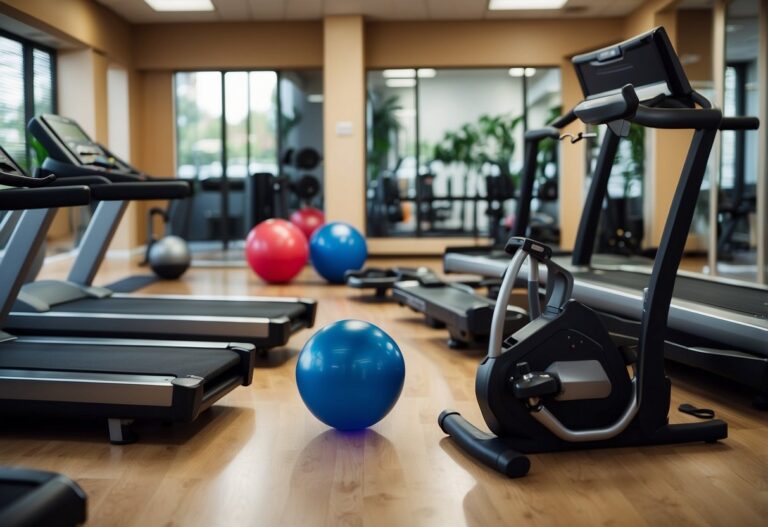Track workouts can be a fantastic way to boost your running performance and overall fitness. Whether you’re a beginner or an experienced runner, a good track workout can help you enhance your speed, endurance, and strength. How can you make the most of your time on the track to achieve your fitness goals?

These tips will guide you through essential strategies and techniques for effective track workouts. From warming up properly to mastering different interval training methods, you’ll find useful advice to tailor your workouts. Embrace the challenge and watch your running capabilities improve with each session.
Warm-Up Properly
Warming up is essential before any track workout. A good warm-up prepares your muscles, reduces the risk of injury, and gets your heart pumping. Start with light jogging or brisk walking for 5-10 minutes. This helps increase your heart rate and loosens up your muscles.
After that, move on to dynamic stretches like leg swings. Stand tall, balance on one leg, and swing the other leg back and forth about 15-20 times. Repeat with the other leg. You can also try leg crossovers to target your lower back and hamstrings.
Trying a 3-step warm-up routine can be very effective for track workouts. Begin with total body movements at a low intensity, increasing gradually. This routine focuses on flexibility and proper mechanics, crucial for performance and safety.
Interval Training
Interval training is a great way to boost your running speed and endurance. It involves alternating between high-intensity running and recovery periods.
To get started, warm up for about 15 minutes with dynamic stretches and easy jogging. This prepares your body for the intense workout ahead.
Run at about 85-95% of your maximum speed for one minute. Then, slow down and jog or walk for two minutes to recover. Repeat this pattern four to six times.
For more structured workouts, you might try running 400 meters fast, followed by a recovery jog for 400 meters. Make sure to keep your recovery pace slow, so you’re ready for the next fast interval. These structured workouts help improve your endurance and speed over time.
Stay Hydrated
When you go for a run, your body loses fluid through sweat. To keep you running strong, staying hydrated is essential. Before your workout, drink at least 16 ounces of water. This helps prepare your body for the run.
During your run, carry a water bottle or use a water bladder if you’re out for a long time. Aim to drink about 8 ounces every 20 minutes to maintain your hydration levels.
After your workout, rehydrate by drinking enough water to replace the fluids you’ve lost. Weigh yourself before and after your run to find out how much you need to drink to replenish your body.
Track Your Progress
Tracking your progress can be a game-changer when it comes to achieving your fitness goals. Keeping a workout journal can help you stay consistent. Write down the date, exercises, sets, and reps. You can even note how you feel during the workout.
You might also try using photos to see your body’s transformation over time. Take pictures every few weeks and compare them. Seeing visual changes can be very motivating.
Fitness apps are another great tool. An app like Fitbod helps you customize workouts and track your progress easily. It’s handy if you prefer using your phone over a notebook.
Paying attention to how your clothes fit can also be a simple way to track changes. If your clothes start feeling looser, it’s a sign you’re making progress.
Consider more advanced methods like a DEXA scan or bioelectrical impedance to measure your body composition. These methods offer detailed insights into your muscle and fat percentages.
No matter the method you choose, tracking your progress keeps you focused and motivated.
Use Proper Footwear
Choosing the right footwear is crucial for a good track workout. Proper shoes can help you avoid injuries and improve your performance. When selecting running shoes, make sure they fit well and provide adequate support.
Look for a shoe with enough wiggle room in the toe box. You should have about a half-inch or one finger’s width between your longest toe and the front of the shoe. This space helps prevent blisters and other injuries.
Test a shoe’s flexibility by grabbing the toe and heel and pulling them towards each other. The shoe should bend easily at the ball of the foot. It tells you the shoe will move naturally with your foot while running.
Always break in new shoes with shorter runs before using them for long distances. This approach helps avoid discomfort and ensures the shoes mould to your feet properly.
Maintain Good Form

When running, keeping your arms relaxed is crucial. If your arms swing across your chest, this can affect your legs and disrupt your form. Try to keep your arms swinging naturally at your sides. Think of them as pendulums, moving forward and back with your stride.
Your posture matters. Aim to keep your torso upright, and engage your core. Good posture helps prevent injuries and improves efficiency. Try not to hunch over, as this can make breathing harder and slow you down.
Focus your gaze straight ahead. Looking down at your feet or up at the sky can mess with your balance. Keep your head steady and your eyes on the horizon.
Run with a slight bend in your knees and aim for a midfoot or forefoot strike. A heel strike can create more impact stress on your legs. Imagine you’re lightly landing each step rather than heavy-footed stomping.
Rest and Recovery
Rest and recovery are crucial parts of your track workout routine. After an intense run, your body needs time to heal and rebuild. This process helps you avoid injuries and improve your performance.
Ideally, you should take 36-48 hours to fully recover from a strenuous workout. During this time, your muscles repair and grow stronger.
Consider incorporating activities like swimming or yoga into your recovery days. These exercises keep you moving without putting too much strain on your body.
Don’t forget about mental recovery. Taking time off from training can help you stay motivated and focused. Engage in hobbies or spend time with friends to refresh your mind.
Nutrition Matters
Eating right is essential for track athletes. Protein helps repair muscles after tough workouts. Good sources include lean meats, eggs, and dairy. Try to have 20-30 grams of protein after training to aid recovery.
Carbohydrates provide energy for your runs and sprints. Foods like whole grains, fruits, and vegetables should be your go-to for carbs. They keep you energised and ready for each training session.
Don’t forget hydration. Drink plenty of water throughout the day, especially during and after workouts. Hydration is key to keeping your body performing at its best.
Consider adding creatine to boost muscle energy. Many athletes find it helps with recovery and performance. It’s widely researched and used in sports circles.
Track what you eat and how it affects your performance. Keeping a food diary can help you note what works best for your body. This way, you can make adjustments to optimise your diet.
Set Realistic Goals
Setting realistic goals helps keep you motivated and on track. It’s important to be precise about what you want to achieve. For instance, instead of saying, “I want to get stronger,” aim for “I want to do 10 push-ups.”
Make sure your goals are achievable and practical. Don’t set yourself up for failure by aiming too high. If you’re new to working out, start with smaller, more manageable goals.
Be flexible in your definition of success. It’s okay to adjust your goals as you progress. Remember, it’s about the journey and staying committed.
Strength Training
Strength training is important for runners. It helps you build stronger muscles, which can protect you from injuries. Incorporating exercises like squats and lunges can boost your performance on the track.
You don’t need to spend hours in the gym. Even 2-3 sessions per week can make a difference. Focus on both upper and lower body exercises to give your whole body a balanced workout.
Try adding exercises such as plank variations and deadlifts. These can improve your core strength and stability. Remember, consistency is key. Aim to stick with your routine regularly for the best results.
Ready to start? Think about how you can fit these exercises into your weekly schedule. If you need a plan, check out this runners’ strength training guide. This can offer a structured approach, making it easier to stay on track.
Importance of Warm-Ups
Before hitting the track, a proper warm-up routine ensures that your body is ready and reduces the risk of injury. Warming up prepares your muscles and enhances your overall performance on the track.
Preventing Injuries
Warming up helps in preventing injuries by preparing your muscles for the workout. When your muscles are warm, they become more flexible and less prone to strains and sprains.
Dynamic stretches like walking lunges and leg swings can be effective. These movements improve blood flow and loosen up tight muscles, especially the hamstrings and calves. For example, light aerobic exercises such as jogging can help you start slow and gradually build up intensity.
Remember, an effective warm-up isn’t just about moving; it’s about moving in ways that prepare your body for the specific demands of your track workout. A well-executed routine can target areas most likely to be injured, providing a layer of protection.
Optimising Performance
A good warm-up not only prevents injuries but also boosts your performance. By increasing your muscle temperature and blood flow, you enhance muscle efficiency and power. Warm muscles contract more quickly and forcefully, improving your speed and agility on the track.
Include exercises that mimic the motions you’ll be using. For instance, if you’re sprinting, incorporating high knees and butt kicks will activate the right muscles. Doing sport-specific drills that focus on your event can make a huge difference.
Additionally, dynamic stretching, like arm circles and leg swings, ensures that your joints have a full range of motion. This can significantly enhance your timing, reaction, and overall athletic performance.
Track Workout Techniques
Mastering track workouts involves different techniques to enhance both speed and endurance. This guide covers the essentials of interval training, speed workouts, and long-distance training to help you improve your performance on the track.
Interval Training
Interval training is key for improving your running speed and stamina. It involves alternating between short, intense bursts of activity and slower recovery periods. For example, you might run 400 metres (one lap) at a high intensity, then jog or walk for 200 metres to recover. This method helps you build endurance and speed over time.
A common interval training session starts with a warm-up, such as running 800 metres at a relaxed pace. Then, you can do 5 to 7 reps of 400 to 800 metres with recovery periods of 200 to 400 metres. Remember to keep track of your times to monitor progress.
Speed Workouts
Speed workouts focus on improving your maximum running speed. These workouts typically involve shorter distances run at high intensity. For instance, you might run 100 metres at full speed, rest briefly, and repeat. These sessions not only boost your sprinting ability but also improve your overall running efficiency.
Start with a thorough warm-up to prepare your muscles. A good speed workout includes multiple reps of 100 to 400 metres at 80-85% of your maximum effort. Rest for a short period between sprints. Incorporating these workouts into your routine will help you become a faster runner over time.
Long Distance Training
Long distance training aims to increase your endurance and overall fitness. This technique involves running longer distances at a steady, moderate pace. For instance, you can run 1600 metres (one mile) reps, focusing on maintaining a consistent pace.
Begin with a warm-up of 800 to 1600 metres. After warming up, do several 1600 metre reps, allowing for adequate recovery between each. The key here is consistency—keep a steady pace that is challenging but sustainable. Over time, this will build your endurance, allowing you to handle longer runs with ease.
By integrating these techniques into your routine, you can significantly improve your track performance. Ensure you balance your workouts with adequate rest and recovery, and listen to your body to avoid overtraining.
Recovery Tips
To bounce back effectively from your track workouts, it’s crucial to focus on proper cool down exercises and nutrition. These strategies will help reduce muscle soreness and speed up your recovery time.
Cool Down Exercises
After an intense track session, proper cool down exercises are essential. Begin with light jogging or brisk walking for about 5-10 minutes. This helps to gradually reduce your heart rate and prevent blood pooling in your legs.
Next, incorporate some static stretching. Focus on major muscle groups, including your hamstrings, quadriceps, calves, and hip flexors. Hold each stretch for 20-30 seconds to improve flexibility and reduce muscle tightness.
Foam rolling is another great cool down technique. Use a foam roller to massage your muscles, which helps to release tension and increase blood flow. Spend extra time on areas that feel particularly tight or sore.
Leg elevation can also speed up recovery. Lie down and prop your legs up above the level of your heart for 15-20 minutes. This helps to reduce swelling and ease inflammation in your legs.
Nutrition for Recovery
What you eat after your workout plays a significant role in recovery. Try to consume a balanced meal or snack within 30-60 minutes post-exercise. This period is optimal for nutrient absorption, helping to replenish glycogen stores and repair muscles.
Include a mix of carbohydrates and proteins in your post-workout meal. Carbohydrates will replenish your energy levels, while proteins aid in muscle repair. For example, a turkey sandwich on whole-grain bread or a smoothie with fruits and yoghurt can be effective choices.
Hydration is equally important. Drink plenty of water or an electrolyte-rich beverage to replace fluids lost through sweat. Staying hydrated helps to prevent cramps and supports overall recovery.
If possible, incorporate omega-3 fatty acids into your diet. Foods like salmon, flaxseeds, and walnuts can help reduce inflammation and promote healing.
By integrating these nutrition tips, you’ll enhance your recovery and be better prepared for your next track workout.







